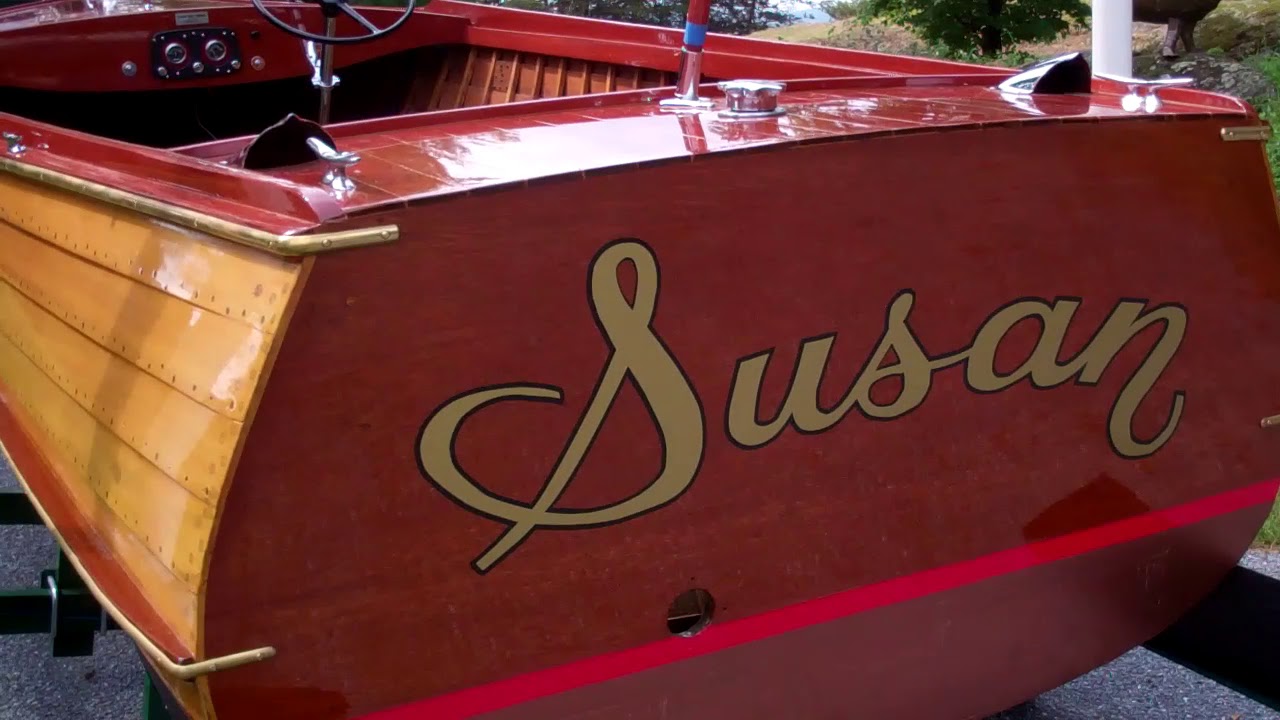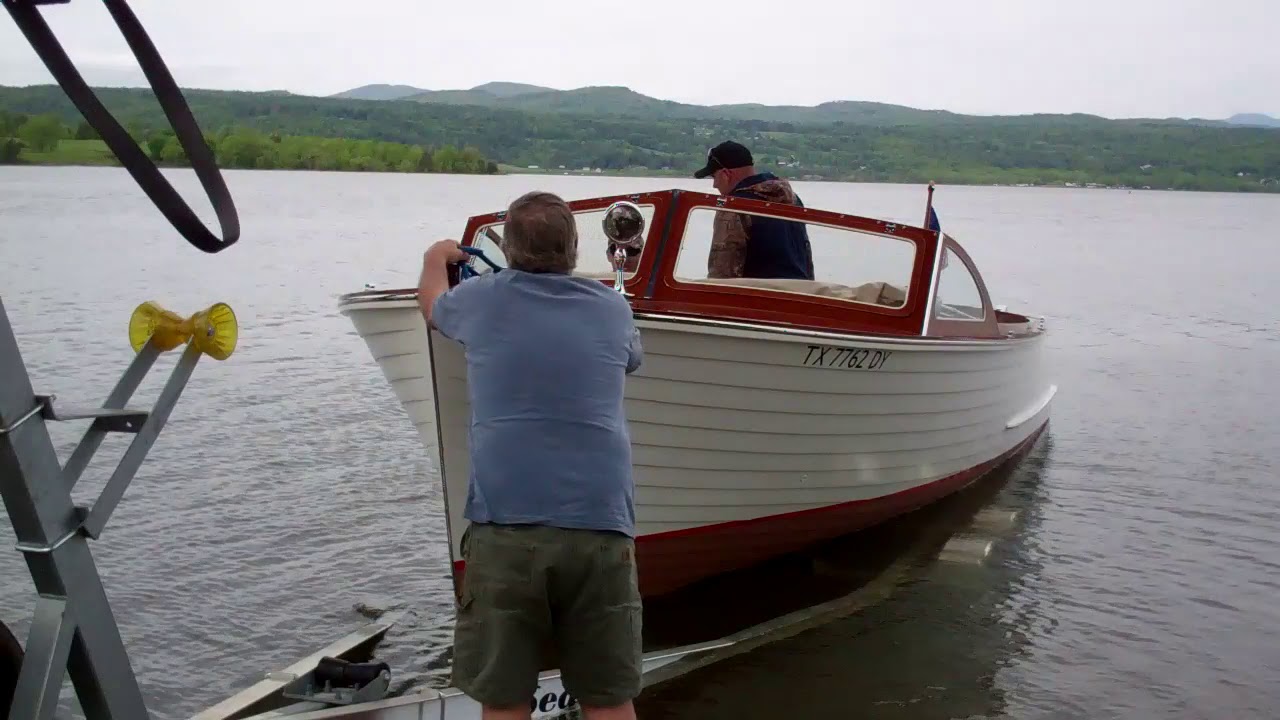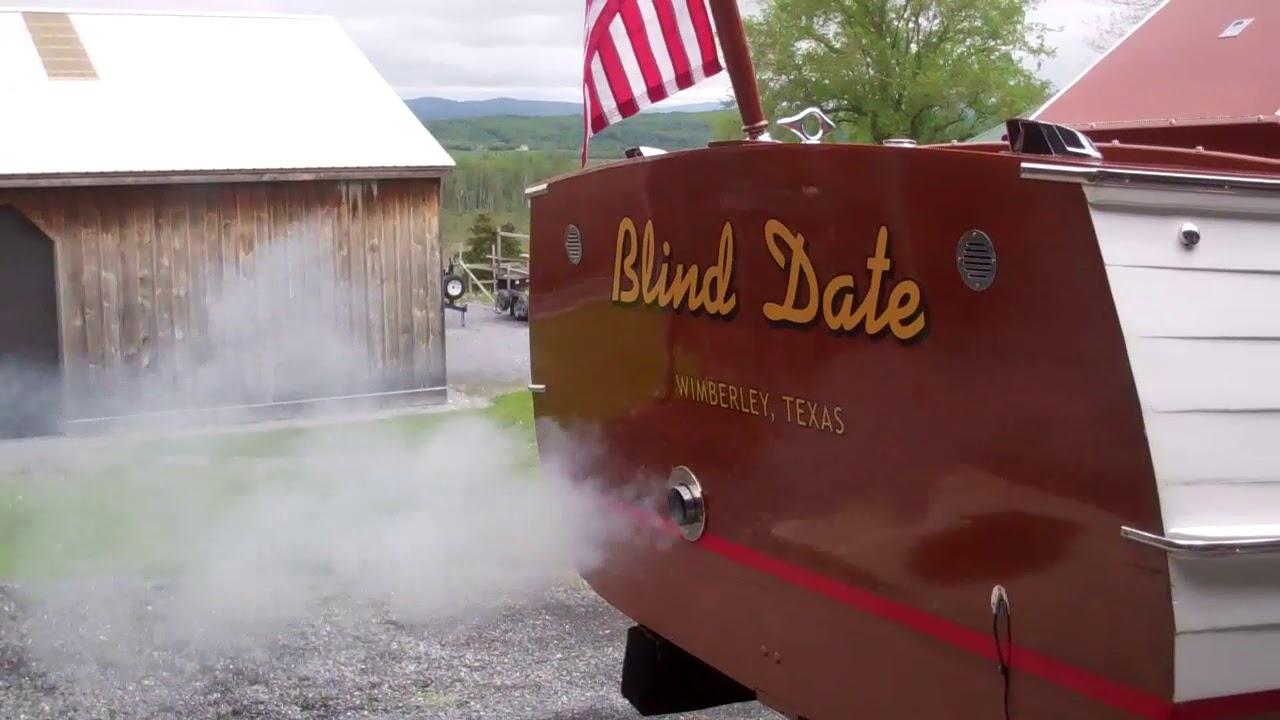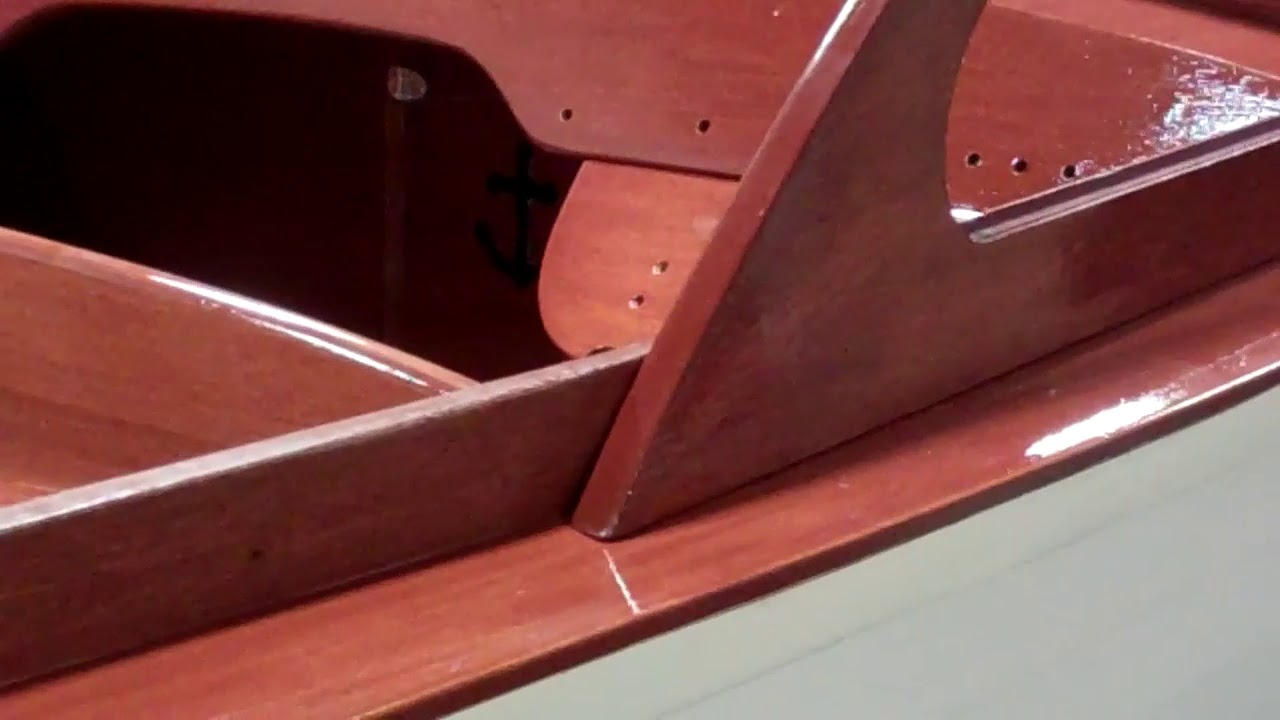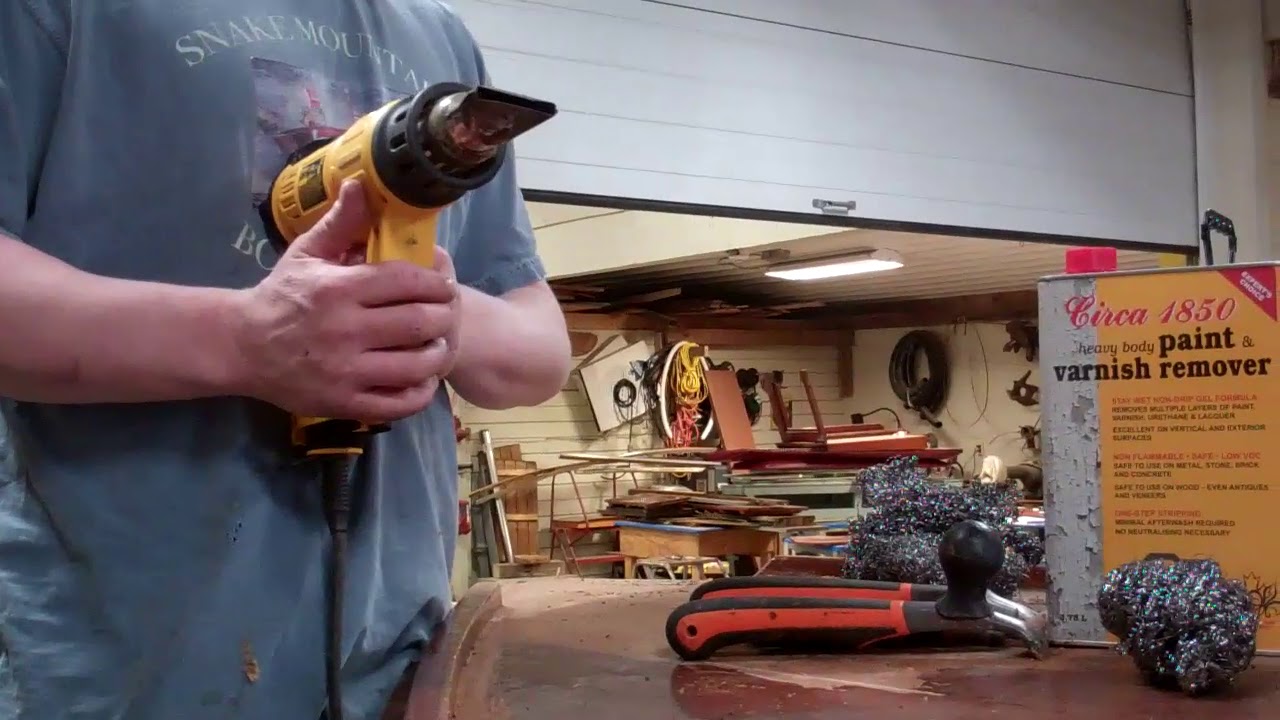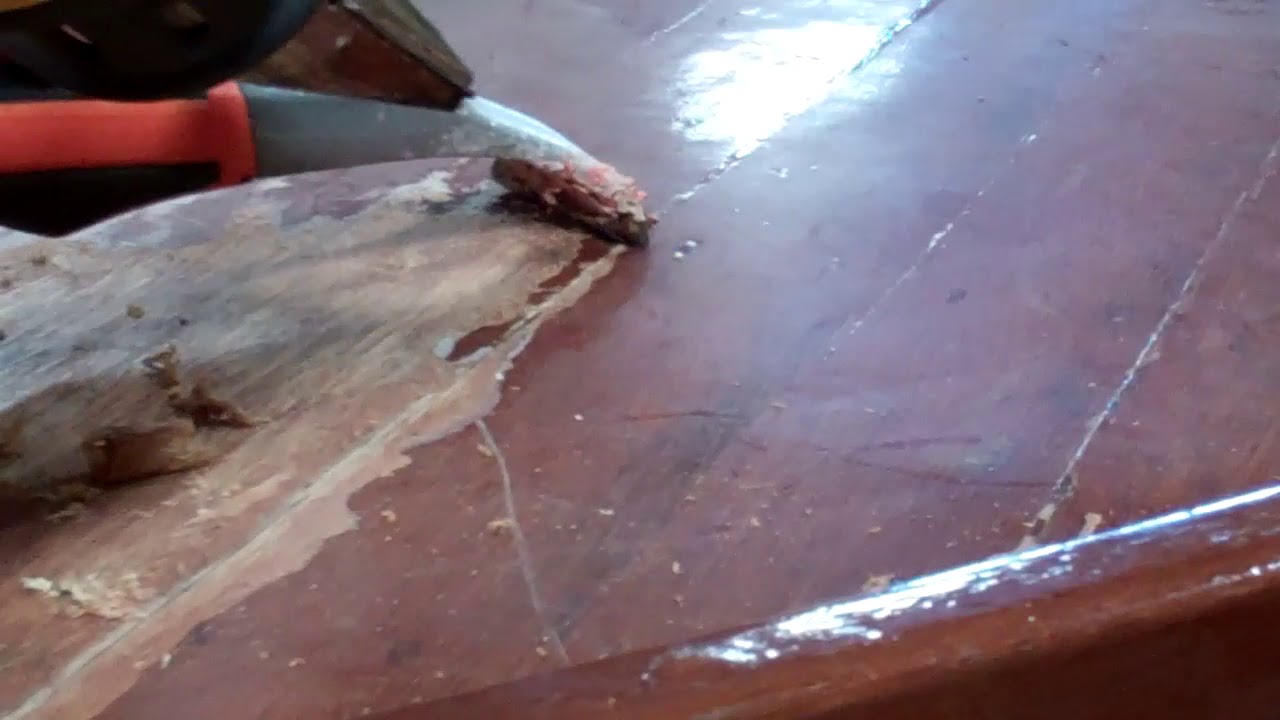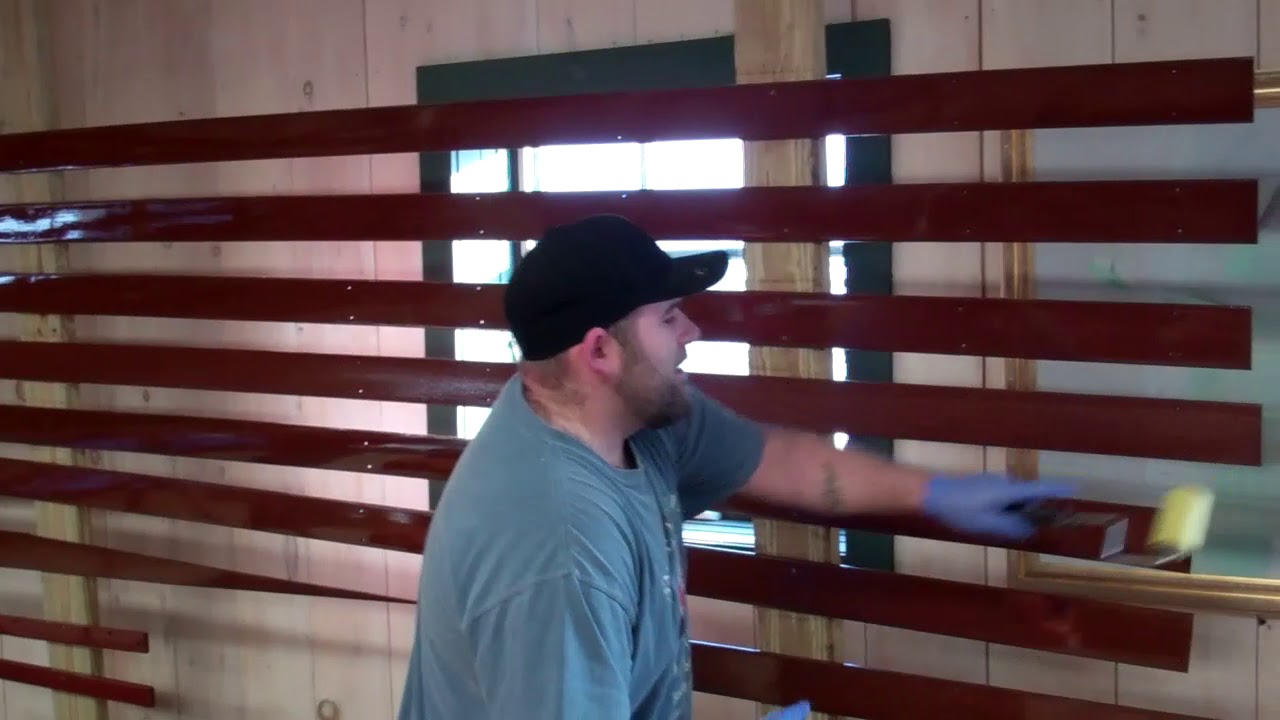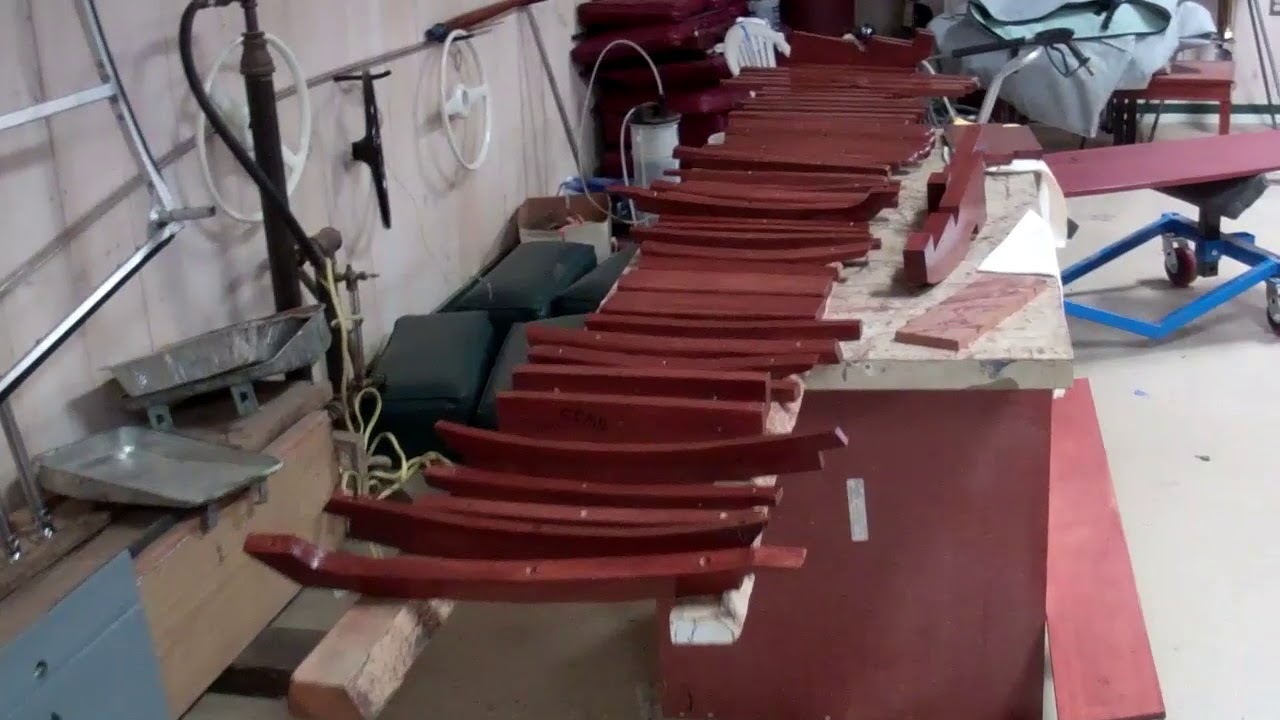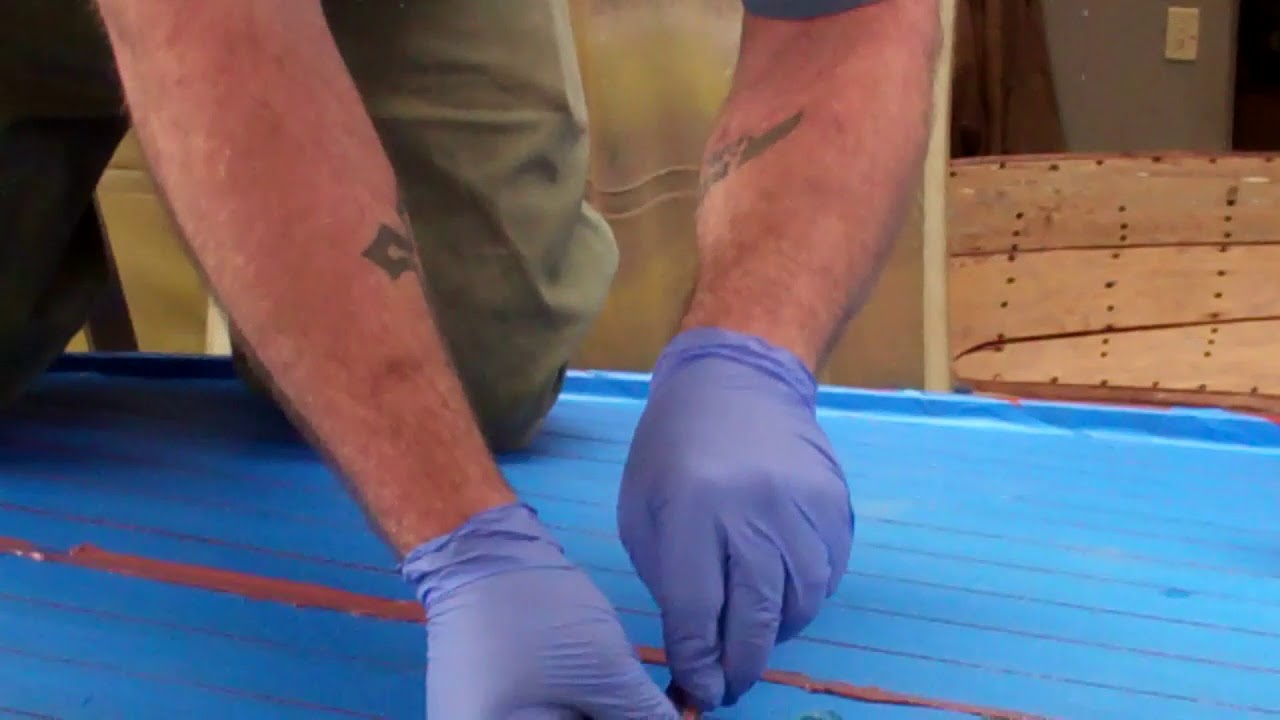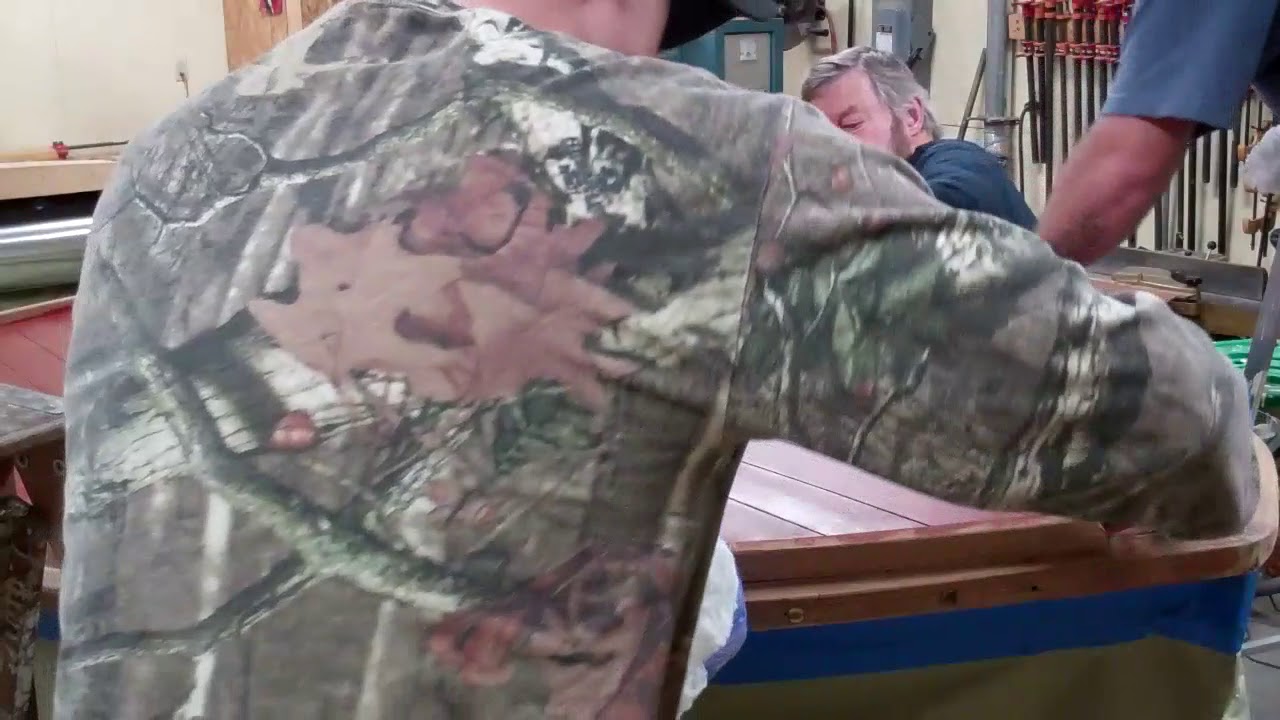Susan, our 1940, sixteen-foot LOA Lyman Yacht Tender, HIN 10151, with aft facing aft cockpit is oh, oh so close to the finish line.
Yes, she was Susan when new, so our vinyl master duplicated that freehand font and Susan she will be until a future steward can express her/his preference for some other name. That said, I chose 7-year vinyl and will not varnish over it, which facilitates simply peeling it off if a future owner wishes to without doing any damage to the varnish.
A REQUEST: Her original 12” x 18” ensign was in tatters and worse when I bought her, so I am searching for a period, or at least period-correct, but not-brand-new ensign. Anybody have one I can buy that will become Susan’s? Thanks.
Other boat obligations forced us to banish her to storage for a bit, before we install her windshield and seating – the latter will return from upholstery soon. We are also waiting on an exhaust elbow, as the one bolted on when she arrived was, well, junk.
She is fitted with Cypress hullside strakes down to the waterline and mahogany from there down to the keel. She is rather stunning mahogany everywhere else. Viewing the clip surely puts a spotlight on her mahogany.
Save for one small, rectangular Dutchman repair just below her starboard rub rail and just about at the helm station, 99.99% of her wood is original. Every rib and every frame member are original and one-hundred percent rot-free. The one .0001% is the below-deck bow light backing block. We replaced it.
We stripped her to bare wood inside and out, stem to stern and started back, beginning with RJ and I sanding and finishing her interior hullsides and bilge while she was upside down. RJ has yet to forgive me, but gives credit to me for having suffered through at least half of this torture.
The interior hullsides received multiple coats of Sikkens Cetol Marine, and we applied three plus coats of SANPACO Lyman Sand Tan Bilge Paint to the entire bilge and all of its components.
Her bottom seams were sealed with TotalBoat Thixo Flex from Jamestown Distributors before we applied three coats of CPES and three of Pettit Tie Coat Primer 6627 and four coats of Sandusky Lyman Copper Bronze Antifouling Bottom Paint.
Deck seams were filled with Sikaflex 290 LOT – Mahogany based on a former owner’s memory.
After sanding everything fair, we bleached decks and hullsides as well as every “loose” component.
We stained using mahogany components with Lake Oswego Boat Company “Lyman” Gel Stain. The Cyprus hull sides received natural Gel Stain, and then the varnish marathon began. Pettit Hi-Build followed by the last two coats of Pettit Captains Varnish Ultra Clear 2067
OMG! Thirty-two coats later, my crew decreed, “That’s spectacular. Enough already!” Indeed, the gloss is a mile deep.
Preservation team:
Gauge Restoration: Shauna Whiting, Kocian Instruments, Forest Lake, MN
Metal Restoration: Mickey Dupuis, Custom Metal Restoration, Holyoke, MA
Engine Rebuild: Robert Henkel, Peter Henkel INC., Marine City, MI
Woodwork and finishing: Snake Mountain Boatworks LLC’s crew
Maybe, maybe, maybe we can pull everything together by Labor Day. Might even celebrate a bit as she romps across Lake Champlain!

